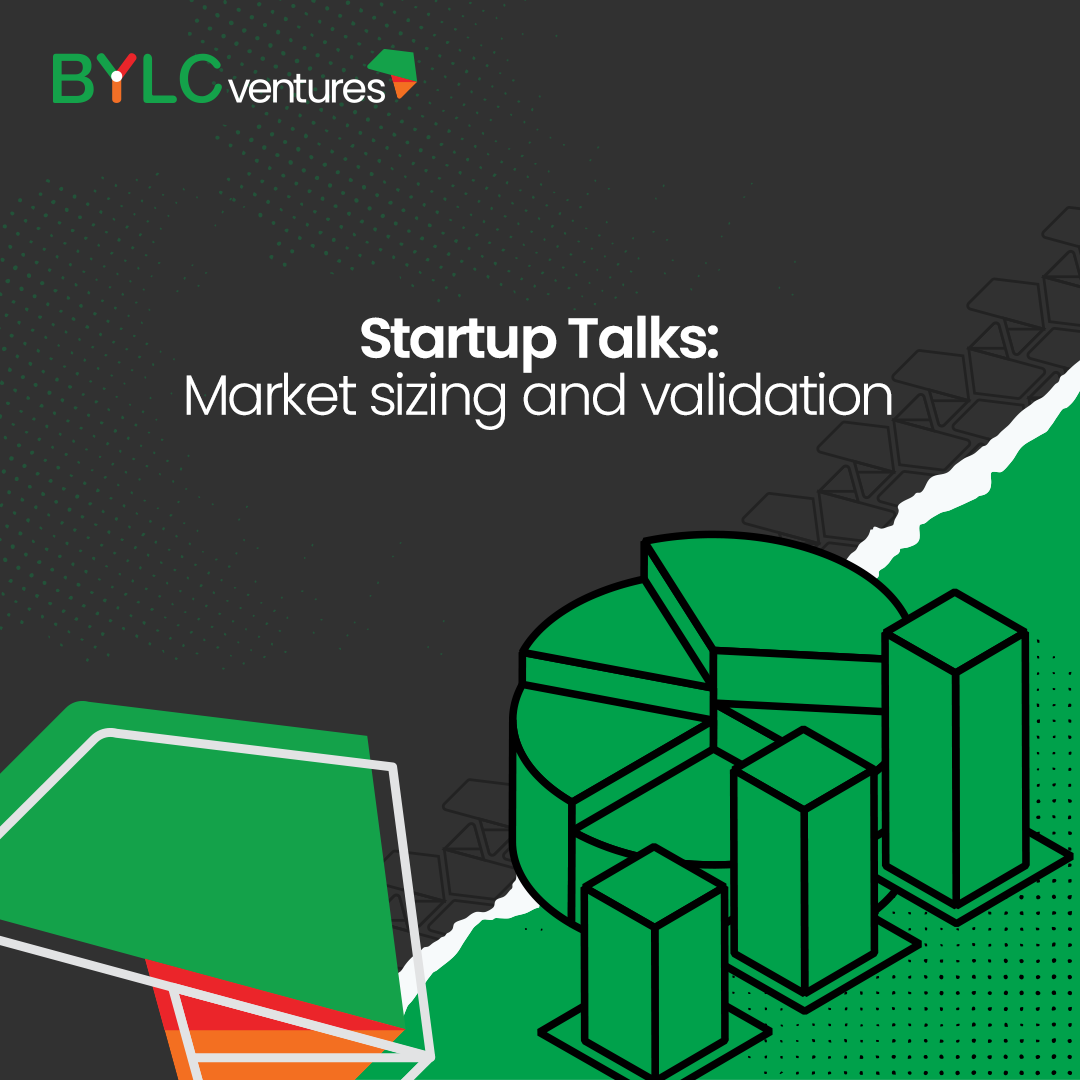
As the Exploration Lead under the Innovation Team at Grameenphone, Md. Shadman Rahman works on finding innovative ideas and bringing them to life.
In a recent episode of BYLC Ventures Startup Talk, Mr. Rahman shares how founders can use design thinking to move from identifying the right problem to developing a hypothesis to testing and prototyping, to rapid iterations.
The talk, which took place live online, attracted huge attention from aspiring founders and offers excellent insight into the complex world of venture building. Here we illustrate some select insights from the talk that founders and aspiring entrepreneurs can use in starting and building successful companies.
Choosing the right customer segment is a key problem to solve for an entrepreneur.
Every successful business solves problems. Thus for founders, the first step of starting a business is identifying a problem. Now merely identifying a problem is not enough. You have to identify a problem that is solvable and for which people are willing to pay for a solution. While finding problems is relatively easy, finding the right kind of problem that you can profitably solve is not. Now that requires a method that can be applied reliably to identify the right problem and design solutions for which people will be willing to pay.
Experts suggest different shortcuts to find worth solving problems. Paul Graham, Founder of Y Combinator famously said, start with solving a problem that you have. That is a classic shortcut.
Another shortcut, which is almost similar to what Graham said, is identifying a customer segment you want to serve and find a problem that they face.
“In many ways, identifying a customer segment is much easier than getting into the sea of identifying a problem. In fact, choosing the right customer segment is a key problem to solve for an entrepreneur”, Mr. Rahman says. “Because now you have a group of people who you can observe, spend time understanding, and design solutions for their most pressing problems.” Second, you can focus since you are solving for one customer segment instead of solving problems for the entire country.

About 42% of startups fail due to a lack of product-market fit. But how do you get to product-market-fit? It comes back to solving the right problem and validating your MVP before getting to full-fledged operation.
“There are several methods to understand a problem, design an MVP, validate and launch it in the market,” Mr. Rahman says. “One commonly used methodology is called design thinking. Using design thinking you can identify a problem, design an MVP, test and validate it through a feedback loop that unleashes an iteration process. There are 4 steps in design thinking”:
Let’s go deeper into how you may use design thinking to launch your startup.
Understand. To understand your customer segment as well as the problems you are trying to solve, you can do two things: 1) observe your customers - how they operate, behave, spend time, their main challenges, etc. 2) contextual inquiry - ask questions to learn more about your observation.
Mr. Rahman explains how to run an observation and contextual inquiry study and identify problems: “a few months ago, we were doing an observation study in Pinkcity in Dhaka. We found out that most mothers use phones with large screens. The next step we used is a contextual inquiry which means we went around and asked women why they use large phones. We received different responses from different women. However, we found a pattern that most women take their kids when they go shopping and kids often cause nuisance when left unattended. So they simply give the kids mobile phones with youtube or games to keep them busy and shop in peace. That was a fascinating finding for us. That is an example of how you observe and identify problems.”
Using a combination of these two approaches, you can develop a comprehensive understanding of your customers and problems. But how would we understand which problem is profitably solvable and which is not? That is where the next step of design thinking comes in - exploration.
The most important question for the founders is to ask “why”. Kids are born with this ability to ask questions but we lose the ability as we grow. A startup founder should go back to being a six-year-old and keep asking why until they land on to something that leads to the root cause of a problem.
Explore. “Exploration means digging deep into one particular insight,” explains Mr. Rahman. “The tools remain the same: observation and contextual inquiry.”
You extend the observation to more areas and try to see if the same pattern holds. “If it is so you then have a validation that the insight is valid across markets,” he says. “But if the insight is not valid across markets, say not all mothers buy large phones and don’t give phones to kids while shopping, then it gets even more interesting. You may find that some mothers bring toys to keep their kids busy because giving phones in an area like the New Market is unsafe. This, however, tells us that mothers do bring their kids to shopping and they need to keep their kids busy to shop in peace. That is a validation of your observation.”
Now if a founder comes in and builds a product that will help mothers to keep their kids busy that can be a potential opportunity to build a business. With that hypothesis, you move to the next stage, which is building a prototype.
Minimum viable product (MVP) or prototype. Once you have a validated insight that is true across markets, you build an MVP based on your hypothesis.
“An MVP can be many things depending on the medium you plan to use to reach your customers,” he says. “The nature of MVP is that it is designed for rapid testing to collect customer feedback with a view to iterate. An MVP is critical because it can lead to real progress and help you even attract investors.”
Validation is all about going to the market, testing and iterating your MVP.
Validate. “To validate your MVP, the first thing you need to do is user research. You can conduct user research through observation and talking to your customers. Go to the market in a group - preferably 3 people - where one person will ask questions, another will observe because people are terrible at telling the truth and another will take notes,” Mr. Rahman says.
These three people will go to the market with an MVP they designed. “For example, you designed a Rubik's cube and took it to a mother in a shopping mall and asked whether you can give it to her kid and see if it keeps her busy. You then give it to the kid and observe what she does. You found out that she does not get busy with it and instead puts it in her pocket or you see that she does not play the game but spins it instead. That’s your first feedback from your first prototype that the kid does not want anything brain intensive. You then go back and make your second prototype which can be a fidget spinner. You then give it to another kid in the same location and observe and then you see that the kid keeps on playing with it. Then you know that probably this prototype works” he says.
Now you can do a simple contextual inquiry in this place. “You can ask both the mother and child how they feel. If the mother has inputs such as the product is too addictive, you may tune it down a bit. If the response is positive then you have an MVP that works” he adds.
Validation is all about going to the market, testing and iterating your MVP.
Then comes the willingness to pay.
Steve Blank famously said, “get out of your building” to understand your customers and build a great business. This is at the core of building a great product and thus a great business. The skill and resources you need are a willingness to go out into the market, talk to your customers, learn from your customers, and iterate.
There are many signs of product-market fit and your customers are willing to pay for your product is the most important one of them.
BYLC Ventures funds Bangladesh’s most promising founders, hone their leadership capabilities, strengthen their business acumen, and help validate their big ideas as they transition into the investable business. BYLC Ventures is accepting applications for cohort 2 of its accelerator program, apply today to improve your odds of success as a founder. Learn more about BLYC Ventures here.
